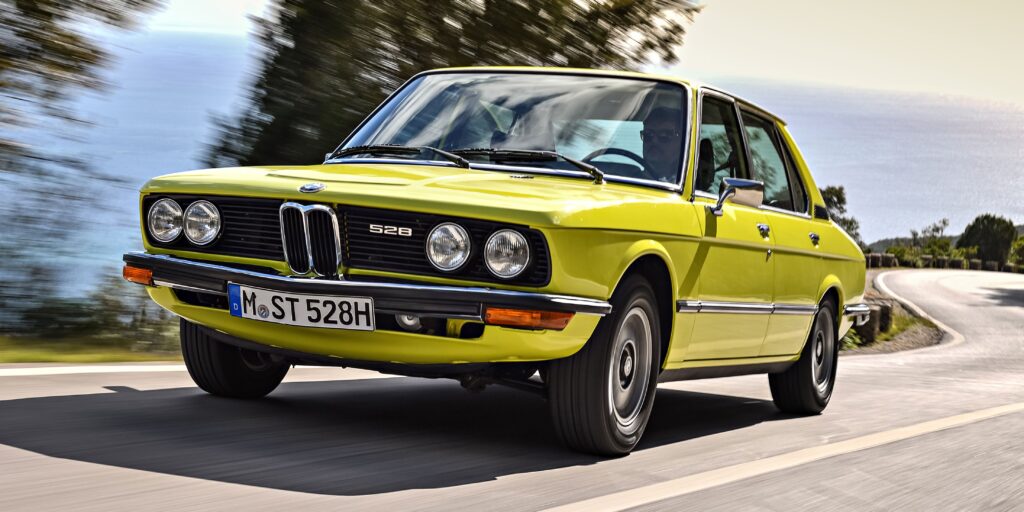
The BMW E12 is the first generation of the BMW 5 Series, which is the automaker’s line of mid-size luxury/executive cars. The E12 was produced from 1972 to 1981 and marked a turning point in BMW’s history, as it helped to solidify the company’s reputation for sporty, driver-oriented cars. Here is a detailed history:
Launch:
The E12 was unveiled at the Munich Olympic Stadium in 1972 as a replacement for the BMW Neue Klasse sedans that had been instrumental in saving BMW from financial ruin in the late 1950s and early 1960s. The E12 was the first car to feature the now-iconic BMW design language, with a driver-focused dashboard and a kidney grille.
Model Variations:
Early models included the 520 and 520i, powered by a 2.0-liter four-cylinder engine. Later, BMW added six-cylinder engines, such as the one in the 525, to the range. The model lineup eventually expanded to include the 518, 520, 525, 528, 530, and 533i, with engine displacements ranging from 1.8 to 3.3 liters.
The six-cylinder 528i became particularly popular for its balance of performance and fuel efficiency, while the 533i and the M535i (a precursor to the M5) offered even more power.
MODELS/ YEARS
Design and Technology:
In terms of design, the E12 had a more aerodynamic look than previous BMW sedans, with a sloping hood and a three-box design. The interior was also a major departure, with an angled center console that would become a hallmark of BMW design.
The E12 introduced several technical innovations to the BMW lineup. These included the first use of four-wheel independent suspension on a BMW sedan and the introduction of advanced electronics, such as an on-board computer.
The design of the BMW E12, the first generation of the BMW 5 Series, was largely the work of French automotive designer Paul Bracq. Bracq was the Head of Design at BMW from 1970 to 1974, and during his tenure he contributed to the design of several influential BMW models, including the E12 and the BMW Turbo concept car.
Paul Bracq’s design philosophy was strongly influenced by his belief in clean, uncluttered lines and efficient design. His work at BMW is characterized by sharp, aerodynamic lines, large glass surfaces, and the signature “Hofmeister kink” in the C-pillar of BMW models.
The overall design language established by Bracq in the E12 has continued to influence BMW design up until today, with every subsequent generation of the 5 Series building upon the strong design foundation laid by the E12.
The E12 also marked the first use of the “twin headlight” design which has become a staple of BMW’s design language. While Bracq was instrumental in the E12’s design, it is worth noting that BMW’s design process is typically collaborative, involving a team of designers and engineers working under the direction of the chief designer.
Production and Legacy:
Over its production run, more than 700,000 units of the E12 were made, a testament to its popularity and success.
The E12 paved the way for the BMW 5 Series to become one of the best-selling and most revered lines in the premium segment of the automotive market. Its emphasis on driving dynamics, comfort, and understated luxury set the tone for subsequent generations of the 5 Series, and these characteristics continue to define BMW’s mid-size offerings to this day.
It’s worth noting that, like many classic BMWs, the E12 is increasingly sought after by collectors and enthusiasts who value its historic significance and pure, analog driving experience.
